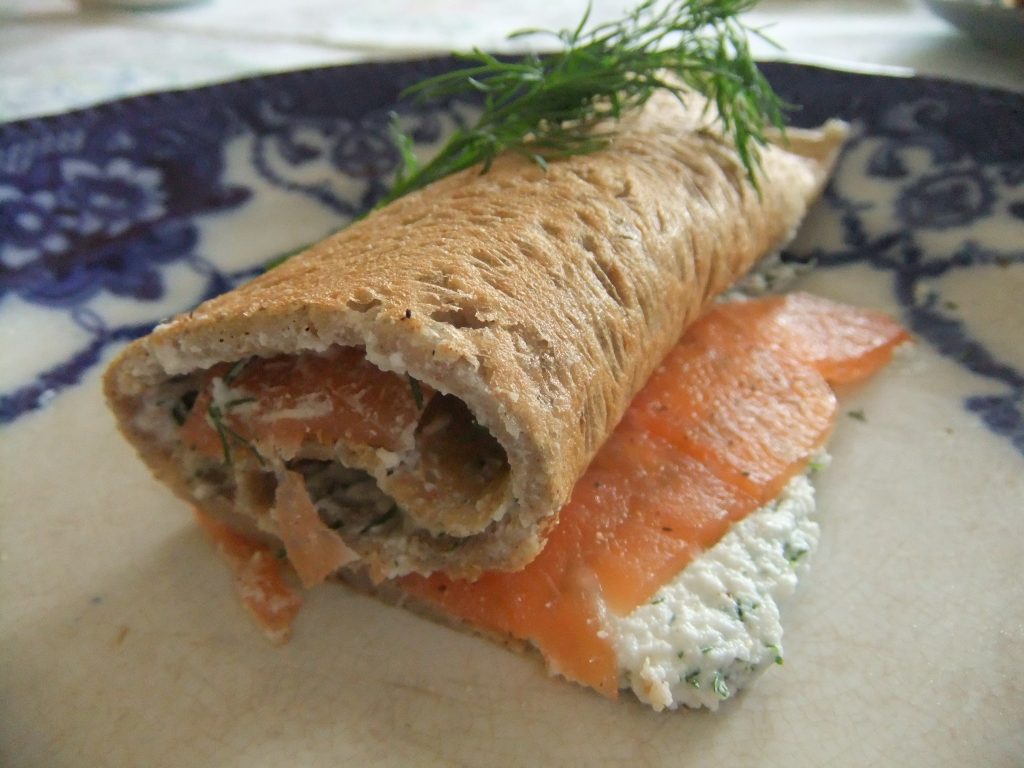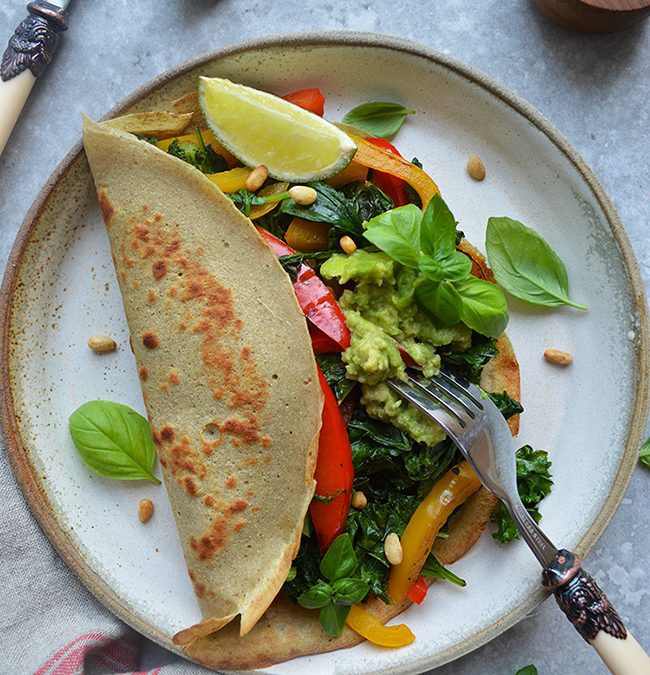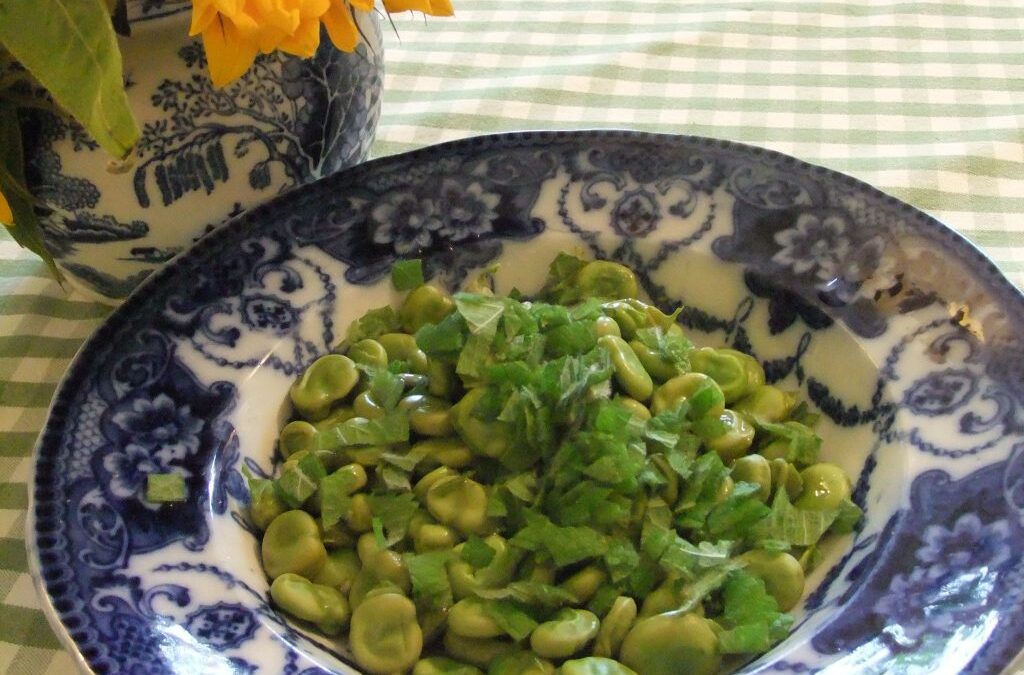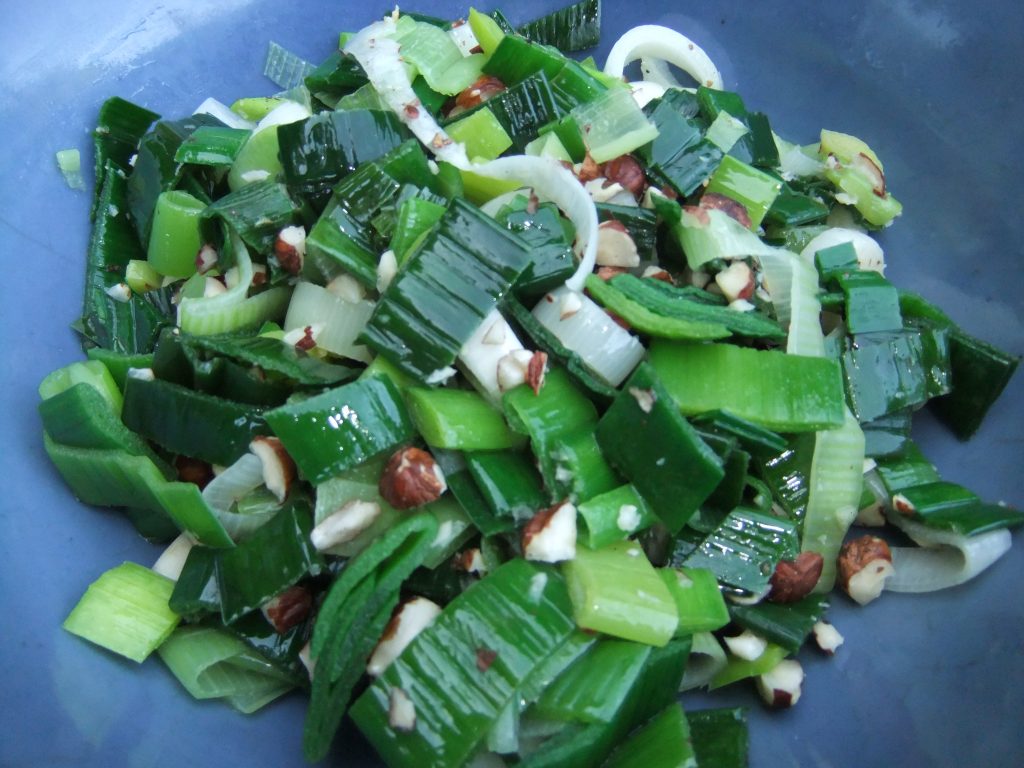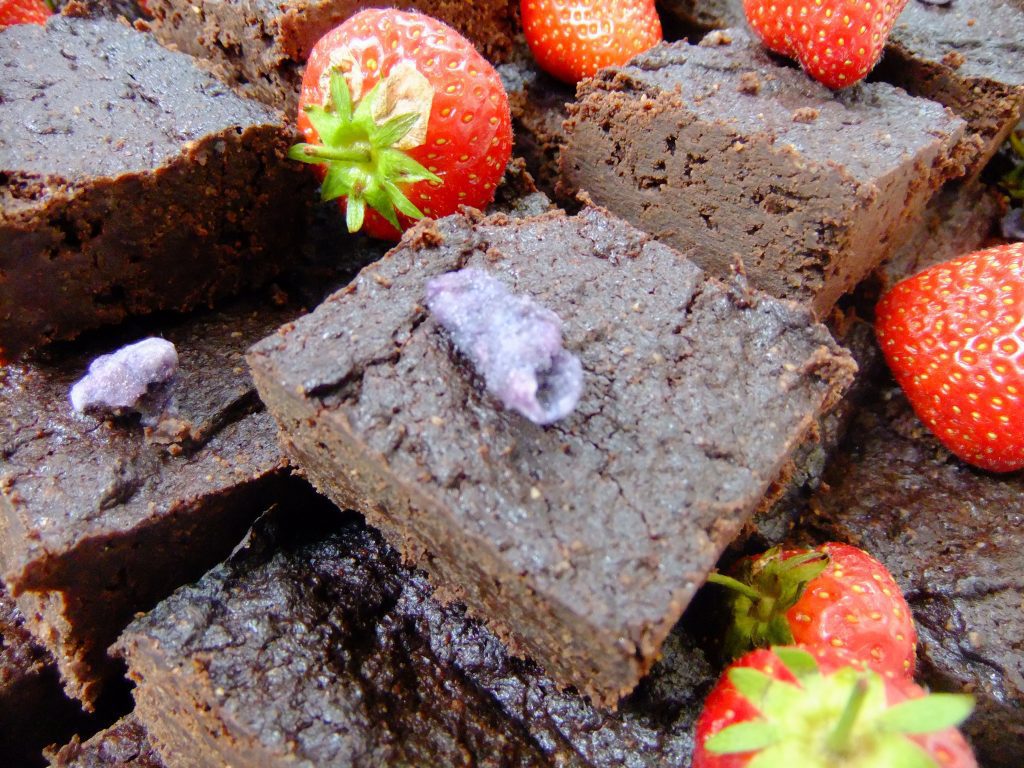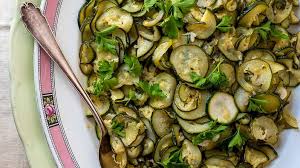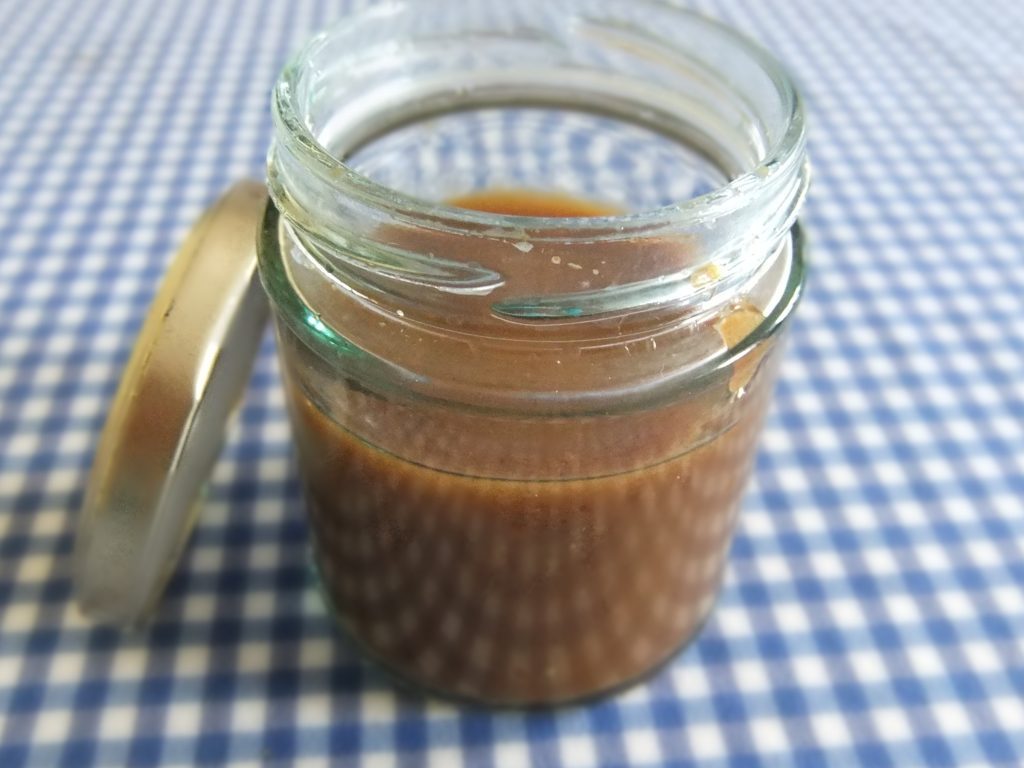Aug 28, 2013 | Anna's Best Recipes, Packed lunches
As its almost the start of the school year I got thinking about kid’s lunchboxes and how to make them better to help learning, behaviour and mood. Here’s my quick 5 point guide to breads & wraps, sandwich fillings and fork lunches, ready made lunches and sweet stuff. Start with small changes so there’s less chance of lunchboxes coming home uneaten. It helps if you are also making changes to breakfasts and family meals to better support health and vitality. Research shows that when children get involved in the preparing of food, they eat it much more willingly. So if there’s any chance you could involve your child in making, say a wholemeal pasta salad, or helping you mash a sandwich filling on a Sunday before the start of the school week, that could be a winner…
1. Switch to wholegrains
Making the change from white sliced pan to brown could be as simple as starting with a sandwich made with a slice of brown on the bottom, and a slice of white on the top layer. Try a halved brown pita bread instead of white for a handy pocket into which to stuff fillings. If you like to cook, get my basic sandwich wrap off this blog and make a few to store in the fridge or freezer. Wholegrain crackers such as Nairn’s rough oatcakes or miniature oatcakes are a winner too, if your child prefers something dry. And remember, any slightly unusual ingredients are to be found on the “larder and shopping” section of this blog.
2. Add high quality, protein-rich fillings for your wholemeal bread, wrap, pita or pasta/rice base
The following will support long-lasting energy and learning after lunch.
- Mashed drained, tinned salmon mixed with a little chopped cucumber. Salmon is full of brain-enhancing omega 3 oils to help learning and mood
- Light Philadelphia, fresh ricotta (even sweeter and better for you), or cottage cheese blitzed in the food processor (to get rid of lumps) mixed with some finely chopped cucumber and sweet red peppers
- Make a creamy tuna filling by mixing 1 dessertspoon of extra virgin olive oil with 3 spoons of natural yoghurt in a bowl to make a sauce. Mix together a drained tin of tuna (tinned in brine or spring water rather than oil), some finely chopped cucumber and a de-seeded chopped tomato and maybe a little finely chopped red onion. This well depend on what your child likes. Add in enough of the sauce to bind it all together. If your child can’t stand lumps, leave out the veggies and try them as maybe a few cucumber sticks or carrot sticks on the side.
- Leftover cooked chicken or beef, shredded or sliced, with the same sauce/veggies as above or mixed with red pesto, a little extra virgin olive oil, and the veggies.
- You can also mix the tuna, cheese or chicken with leftover wholemeal pasta shapes and put into a box for an older child to eat with a fork.
- On a Sunday or a day off, take 5 minutes with your kids to make my ultra easy chickpea salad or my super quick butter bean salad – stuff into a wrap or wholemeal pitta or add some cooked leftover brown rice, brown pasta, quinoa or millet for a fork lunch. If your kids get involved, they are 100% more likely to eat the results!! These lunches are incredibly good value and fantastic for learning and mood as beans and pulses are rich in magnesium.
- Buy some wooden kebab sticks in the supermarket or Asian shop. Cut up bite size pieces of cucumber, sweet red/yellow pepper, cherry tomatoes, and bought-in felafels (chick pea patties from health stores or Halal shops) or pieces of cooked chicken. Thread on the sticks. If you end up with a bit more time, make up a spicy sauce from half a cup of natural yoghurt mixed with a little crushed garlic for older children to dip the kebabs into and put in a little plastic container in the lunchbox.
3. Even shop-bought lunches can be better quality
All the ideas below contain high quality protein for sustained energy and learning:
- A whole tub of shop bought humous, a cellophane-wrapped pack of Nairn’s rough oatcakes, some vegetable sticks and a couple of mandarins, plums (for older children) or an apple. Surprisingly, raw red peppers, carrots, cucumber, even celery are more appealing to kids than limp cooked veg! – start with one or two in the lunchbox, don’t comment if it comes back uneaten, just keep putting it in – this approach often yields results)
- A tub of 3 bean salad from the supermarket deli counter or a bean-based salad from M&S, a piece of fresh fruit, plus and maybe a brown roll/bread for bigger appetites
- For real emergencies, have a stash of John West Light Lunches in the cupboard for an older child with a bigger appetite. These are next to the tinned fish in supermarkets. The best choice is the Mexican style tuna salad because it contains beans instead of white rice. A piece of fresh fruit alongside makes an OK lunch thats very tasty. These even come with a handy fork.
5. Something sweet
If your child is really not content with a piece of fruit as their something sweet, then some of the following are healthier alternatives to sweets and sugary snacks. Bear in mind that for high quality sweet treats you need to spend either time or money. Expensive ingredients cost more to manufacturers than cheap low quality ones. In the next few weeks I will be putting up some recipes for flapjacks and bar.. Just enter your email in the side bar this blog to get notified when I post a new recipe. Here are a few ideas to get you started:
- Baby Organix biscuits and munch bars from supermarkets – these are sweetened with fruit juice instead of sugar.
- Nak’d Bars from health stores are fantastic quality
- Fruitas bars from health shops are good too
- Home-made flapjacks sweetened with raw cane molasses or xylitol instead of regular sugar and using wholemeal flour instead of white. I will be posting some flapjack recipes in the coming weeks.
- 1-2 dried no-soak dates from the supermarket
- 1-2 unsulphured apricots from the health stores for a chewy burst of sweetness
- A few sundried banana chips from health stores or Dublin Food Co-Op (see larder section of this blog for Coop details)

Aug 23, 2013 | Anna's Best Recipes, Cakes, biscuits & bars
This is a pretty easy and deliciously moist cake which I made last weekend. Serve as an afternoon tea cake or as a dessert with a fresh orange and blueberry fruit salad and/or (if you eat dairy) a blob of natural Greek yoghurt.
For one 23cm round cake to serve 6-8
2 medium oranges – organic and unwaxed
3 eggs, separated
120g Xylitol
150g ground almonds
1 level tsp gluten-free, aluminum-free baking powder
Check out my “larder & shopping” section for where to buy unusual ingredients
1. Place the clean, whole, and unpeeled oranges in a pan with enough water to cover. Bring to the boil, cover with a lid and simmer for about one and a half hours or until soft, adding more water if necessary (you can do this in a pressure cooker in half the time – just half cover the fruit with water).
2. Drain the oranges and cut them into quarters, discarding any major pips. Put the orange pieces, including the peel, in the food processor and blend to a pulp. Leave to cool.
3. Beat the egg yolks and the xylitol in a large bowl until light and fluffy. Beat in the orange pulp, almond, and baking powder. In a separate bowl, beat the egg whites until they form soft peaks, then gently fold into the orange mixture.
4. Preheat the oven to 175C/160 fan/gas 4. Lightly oil and line a 23cm round loose-bottomed cake tin or rectangular loaf tin with greaseproof paper.
5. Bake for an hour, until golden and firm to the touch. Turn out carefully and store in an airtight container in the fridge for up to 5 days.
Why this recipe is better for you:
Foods cooked at over 120C are less good for you than foods cooked at low temperatures. However, this cake is still better for your body than most bakery goods which contain toxic refined oils, sugar and white flour. Because the cake contains protein from the almonds, it’s low GI. This means it won’t upset blood sugar levels and cause fluctuations in energy or mood or stress levels. Xylitol is a tooth-friendly and healthier alternative to sugar. Because non-organic oranges are covered in pesticides and chemical-containing preservative waxes, their skins contain harmful chemicals. Boiling the fruit and discarding this water should make the skins safer to eat. The ground almonds in this cake do not count towards your daily intake of healthy, raw omega 6 oils as they have been heated to a high temperature and lose their beneficial properties.

Aug 23, 2013 | Anna's Best Recipes, Breads, crackers, pancakes & wraps, Breakfasts & smoothies, Main courses
Ate these last Sunday for a late and leisurely breakfast. If you have ever successfully made ordinary pancakes, these will be a doddle for you. Buckwheat galettes are a traditional pancake made in Brittany and eaten with savory fillings. They are naturally gluten-free. If you want, you can store them in the fridge for 1 day, or freeze them for up to one month. When freezing, separate them with greaseproof or baking paper and store them in a self-seal bag to prevent drying out. To serve made-in-advance galettes hot, add one at a time to a dry frying pan, when the first side is hot, flip over. This recipe makes 4 large galettes. to make this a balanced lunch or dinner, simply add a large salad or steamed green vegetables drizzled with olive oil.
Buckwheat pancake with ricotta, dill & smoked salmon
For 2 piggy eaters (or 4 normal appetites!)
100g buckwheat flour (for unusual ingredients see larder section)
1 large egg, organic if possible
300ml/ ½ pint liquid – use 150ml/ ¼ pint each water and milk (rice milk, cows milk or soya milk or oat milk – NB oat milk may contain gluten) or use all water. See larder for further info.
A little virgin macadamia oil, coconut oil, or, if you can’t get these, some extra virgin olive oil
Freshly ground black pepper
100g smoked salmon, ideally wild or organic
1 small tub (150-200gg) buffalo or cow ricotta cheese (if you can’t get this, use low-fat cottage cheese, mashed or blitzed in a processor until smooth-ish in texture)
2 tbs chopped dill herb (a small bunch should be enough to yield this quantity)
1. Sift the flour into a large bowl.
2. Make a well in the middle and break in the egg and add a few grinds of black pepper.
3. Using a whisk, gradually add the liquid, whisking well, until the mix has the consistency of thin cream. Depending on the size of the egg, you may need a little more or less fluid than the quantity specified. Like all grain-based foods, buckwheat becomes more digestible if you leave it overnight to soak before cooking.
4. Heat a flat-based frying pan or griddle until hot, wiping a little oil over it with kitchen paper while it is still quite cool (macadamia oil, coconut oil, or extra virgin olive oil are fine)
5. When hot, pour a quarter of the mixture into the centre of the pan, tilting the pan to spread the mixture. Cook for a minute or two, until the pancake, begins to bubble around the edge. Flip it over with a spatula and continue cooking for another minute or two.
6. When the galette is cooked, turn it on to a plate, keep warm in the oven (covered with another plate to keep it all moist) and continue making more and piling them up.
9. To serve, mix the ricotta in a bowl with 2 tbs chopped fresh dill. Cut the salmon into strips and layout on a plate. Give each person a galette and allow them to add the cheese and fish and roll or fold before eating. Yum!
Variations:
Heat up some leftover chickpea curry, bean-based vegetarian curry, chili, or a casserole to use as a filling for these galettes.
Why this is good for you:
Buckwheat flour is a grain that is naturally gluten-free and is packed with nutrition. It is a valuable source of rutin, a bioflavonoid with anti-inflammatory and immune-balancing properties. Rutin, like many other bioflavonoids, helps support the integrity of your skin, making it stronger and less prone to allergic reactions. Ricotta is a cheese made from the watery whey skimmed off after making cheese. Because it is low in casein (the main milk protein that people can be intolerant to), its less likely to be a problem for those with a mild dairy intolerance. Smoked salmon is a high-quality protein that’s packed with essential omega 3 fats. The high protein content of this meal will keep you fuller longer.

Aug 23, 2013 | Anna's Best Recipes, Breads, crackers, pancakes & wraps, Packed lunches
These are nutrient-packed versions of the sandwich wraps that are so fashionable now. They are as simple as a normal pancake to make and are inspired by the delicious buckwheat galettes you get in traditional restaurants in Brittany. This recipe comes from Ian Marber’s book, The Food Doctor everyday diet, which has lots of lovely recipes. Make them in advance and store them in the fridge for a day or two, or freeze for up to a month. When freezing, separate them with greaseproof or baking paper and store them in a self-seal bag to prevent drying out. Like all other grains, buckwheat is much more digestible if you soak before using (ie. make the batter a few hours before you need it or the previous day and store it at room temperature for an extra light result).
Basic sandwich wrap
Makes 8 small wraps
See “larder & shopping” to source new-to-you ingredients
100g buckwheat flour
1 large egg, organic if possible
300ml liquid – use 150ml/ ¼ pint each water and milk (rice milk, cows milk, or soya milk or oat milk – NB oat milk may contain gluten) or use all water. See larder for further info.
A little virgin macadamia oil, coconut oil or, if you can’t get these, some extra virgin olive oil
Black pepper
Baking/greaseproof paper (or tin foil) and (if you want to freeze the wraps) a self-seal bag
1. Sift the flour into a large bowl, then make a well in the middle and break in the egg and add a few grinds of black pepper.
3. Using a whisk, gradually add the liquid, whisking well, until the mix has the consistency of thin cream. Depending on the size of the egg, you may need a little more or less fluid than the quantity specified. Like all grain-based foods, the buckwheat flour becomes even more digestible if you leave the batter overnight to soak before cooking the wraps.
4. Heat a flat-based frying pan or griddle until hot, wiping a little oil over it with kitchen paper while it is still quite cool (macadamia oil, coconut oil or extra virgin olive oil are fine)
5. When hot, pour an eighth of the mixture into the centre of the pan, tilting the pan to spread the mixture. We use a ladle for this as it’s easier to measure out an eighth rather than trying to estimate when in mid-pour. Cook for a minute or two, until the pancake, begins to bubble around the edge. Flip it over with a spatula and continue cooking for another minute or two. Meanwhile, line a plate with greaseproof/baking paper/tinfoil
6. When the wrap is cooked, turn it on to the lined plate. Put another piece of paper/foil on top and continue cooking wraps and piling them up, separated by pieces of paper or foil to stop them from sticking to each other. When all the wraps are cooked and cooled, cover with either another plate and store in the fridge for up to 2 days or else place in a self-seal bag and freeze, to thaw and use as required.
Serving ideas:
Just spread a wrap with one of these combinations, roll up and wrap in a paper sandwich bag secured with an elastic band for a great packed lunch. If you can, add some additional salad in a box on the side.
- Plenty of humous, some de-seeded, chopped tomatoes and/or cucumber, and baby spinach/rocket/lettuce leaves
- Lean chicken, chopped red onion and cucumber, and avocado mashed with lemon/lime juice and some black pepper
- Ricotta or low-fat cottage cheese mashed with crushed garlic or chopped dill, black pepper, and strips of smoked salmon or mackerel
- Grilled Toulouse sausage (Toulouse sausage is usually gluten- and nitrite-free but check with your butcher) or Taifun grill herb sausages (contain gluten) or thickly sliced grilled Taifun basil tofu (gluten-free) PLUS salad veggies (eg rocket, chopped peppers, cherry tomatoes) and a little home-made mayo, aioli, non-sugar tomato ketchup or extra virgin olive oil to moisten.
Again, please see my larder section for all unusual ingredients.
Why this is good for you:
Buckwheat flour is a grain that is naturally gluten-free and is packed with nutrition. It is a valuable source of rutin, a bioflavonoid with anti-inflammatory and immune-modulating properties. Rutin, like many other bioflavonoids, helps support the integrity of your skin, making it stronger and less prone to allergic reactions. Bioflavonoids help build collagen, which is also vital for bone strength. So if you want strong healthy bones and wrinkle-free skin…Fresh raw vegetables are also a source of bioflavonoids.
As regards the fillings, protein (humous, ricotta, vegan sausage, basil tofu, Toulouse sausage, and smoked salmon) delays digestion, giving you a slow-burn, long-lasting energy for hours to follow.

Aug 23, 2013 | Anna's Best Recipes, Sides, starters, soups & snacks
This is my recreation of a delicious little dish I once ate in a simple whitewashed cafe in Cadaques in Northern Spain. Washed down with a rustic red, it was heaven on a plate. If you want it to taste it at its most delicious slip each bean, once cooked, out of its leathery skin. The skins of large broad beans have a slightly bitter taste which most people don’t like. This is fiddly so do this when you have a bit of time, for a special meal, or at the weekend! If you are lucky enough to get baby broad beans (not much more than 1cm long), you can leave them in the skins as they are not bitter. This is the nicest eaten lukewarm, in my opinion. You can make it in advance but do allow it to come to room temperature before serving, or warm it very gently in a pan until lukewarm.
For 2 as a starter, with leftovers
1kg fresh broad beans in their pods OR 350g, frozen (see larder for stockists)
1 heaped tbsp chopped fresh mint (or more, to taste)
Extra virgin olive oil to drizzle
A pinch of Himalayan or Atlantic sea salt (see larder)
Freshly ground black pepper
- If you have fresh beans, pod them. If the beans are large, steam for around 5 minutes. If they are baby beans, steam for around 3. You want them to be softened but not overcooked.
- Drain the beans, and as soon as they have cooled down enough to handle. Slip each bean out of its leathery skin and place in a bowl.
- Drizzle on enough extra virgin olive oil to coat the beans generously, sprinkle on a pinch of salt, and a few good grinds of black pepper.
- When the beans have cooled to lukewarm, add the mint (if you add it when hot, it will turn brown, which you don’t want). Taste, and adjust the amount of mint and seasoning. Eat a small portion as a starter, or a larger one as a main with a large mixed salad and maybe some cooked millet mixed with pesto.
Why this is good for you:
Beans and pulses are a rich source of soluble fibre, which helps nourish healthy bacteria in the gut. These bacteria make butyric acid that repairs the bowel and helps prevent abnormal growths. They also are important for detoxification of hormones, chemicals, and naturally-produced toxins – all good news for skin, energy levels, and healthy digestion. Beans are also rich in magnesium which helps keep you relaxed as well as supports healthy bowel function. Mint has soothing, anti-spasmodic properties in the digestive system. Extra virgin olive oil is rich in vitamin E and health-enhancing polyphenols. The Italians always say that raw olive oil gives you smooth skin and they are right. Olive oil also helps weight management and delays the effects of ageing. If you have difficulty digesting beans then this is a sign that you may need to pep up your gallbladder function or address a possible imbalance of bacteria in the gut.

Aug 13, 2013 | Anna's Best Recipes, Sides, starters, soups & snacks
This is really simple and works hot, warm, or at room temperature, whichever you fancy. I like to eat this with grilled, poached, or baked fish. I invented this a few years ago but forgot about it until this summer’s heatwave. Good quality unrefined (i.e. cold-pressed) nut oil makes this super-delicious but if you can’t get it, extra virgin olive oil is fine – it just won’t have that nutty flavour.
For 2, as an accompaniment
2 large leeks, including the green parts
2 tbsp cold-pressed walnut or hazelnut oil (or extra virgin olive oil if you cant get nut oil)
2 tbs sherry vinegar (or red wine vinegar)
1 tbsp roughly chopped raw hazelnuts
Lots of freshly ground black pepper
A pinch of Himalayan or Atlantic Sea Salt
1. Cut the leeks in half at the point where the white meets the green part. Clean the green parts by separating the layers from each other and running under the tap to remove any grit. Wash the white parts too. Now cut everything into disks somewhere between half and three-quarters cm thick, just so long as they’re all approximately the same.
2. Steam over boiling water or in an electric steamer until wilted, checking frequently. Over boiling water, this will take maybe three minutes. You want the leeks slightly wilted but still bright green. When wilted, drain for a minute or two.
3. Empty the lot into a serving bowl, add the cold-pressed oil, vinegar, hazelnuts, and seasoning. Toss and serve.
Why this recipe is good for you:
Leeks are a rich source of inulin, which helps feed the good gut bacteria that are important for all aspects of our health – skin, immunity, digestion, and more. The green parts of all vegetables are rich in relaxing nutrient magnesium too – for brain, liver, and bowel health. Cold-pressed, raw nut and seed oils are a fantastic source of omega 6 oils, which we need to balance hormones and boost immunity. A typical Western diet today contains a large amount of refined omega 6 oils (all non-raw or non-cold-pressed/extra virgin nut and seed oils are refined). Consuming a lot of omega 6 oils containing -trans fats are linked to premature ageing, life-threatening disease, hormonal imbalance, low energy, and suppressed immunity. Raw-cold pressed nut and seed oils are best kept in an airtight glass bottle in the fridge to stop them from being damaged by oxygen and light and losing their health benefits. Extra virgin olive oil is more stable and can be kept in a dark cupboard. Dressing a salad with vinegar can help boost digestion.

Aug 11, 2013 | Anna's Best Recipes, Cakes, biscuits & bars
I made this decadent recipe yesterday and troughed some, warm, after dinner. I have to say, they were totally delicious. Today we chilled down a couple more in a cool box to eat after a strenuous hill walk and they went deliciously fudgy. These brownies are naturally dairy-free and, if you use gluten-free baking powder, gluten-free too. If you don’t like your cakes too sweet and use a brand of chocolate sweetened with xylitol (instead of a more bitter 80% chocolate), 100g of added xylitol is probably enough. Beetroot is naturally high in sugars so this adds extra sweetness, it also makes them moister. Pure cocoa contains theobromine, a stimulant, so don’t eat too many of these late in the evening or you could be wired all night! Buy any of the more unusual dry ingredients in health stores.
Makes one 28x18cm tray (28 very filling brownies)
250g dark chocolate (at least 70% cocoa solids, ideally 80%)
200g extra virgin coconut oil
250g beetroot, cooked (shop bought is ok – just avoid beets in vinegar!) – to cook your own, scrub, steam or boil, then peel and cool
3 large organic eggs
1 drop of vanilla extract
200g xylitol or erythritol (I reduce this to 100gas I don’t like achingly sweet stuff and the beetroot provides sugars too)
50g cocoa powder
50g brown rice flour
1 tsp gluten-free aluminum-free baking powder (or just aluminum-free baking powder if you can eat gluten)
100g ground almonds
Baking parchment/silicone baking paper plus a little more oil for greasing
28x18cm baking tray or tin (with sides 2cm or more in height)
Food processor
1. Preheat oven to 180C (165C fan)
2. Put the chocolate and coconut oil in a large bowl and place it over a pan of simmering water, making sure the water does not touch the base of the bowl. Leave to melt, then remove from the heat.
3. Puree the cooked beetroot in a food processor then add the eggs one at a time, followed by the vanilla and xylitol or erythritol. Process until smooth and increased in size.
5. Sift cocoa powder, rice flour, and baking powder into another bowl and stir in the ground almonds.
6. Stir the beetroot mixture into the melted chocolate and then fold in the dry ingredients. This looks large but it will still fit in the baking tray.
7. Use baking parchment/baking silicone paper to line the rectangular tray. Pour in the mixture and place in the preheated oven for 25-30 minutes, until just firm to the touch. It is very important not to overcook the brownies or they will be dry. A skewer inserted in the centre should come out slightly sticky. Leave to cool in the tin and then cut into 28 squares. Put in the fridge for several hours for a wonderfully fudgy effect.
Why this recipe is better for you:
Beetroot is a rich source of chromium, which helps your body deal with the high level of sugar in the beet. In “normal” sugar, the nutrient chromium is removed, leaving our bodies struggling to cope with the sugar. The addition of healthy virgin coconut oil makes this recipe low GI because the fat slows the absorption of sugars into the bloodstream. This prevents blood sugar imbalance causing dips in energy and well-being. Xylitol (and also erythritol) are tooth-friendly sweetening agents that do not appear to have health dis-benefits. They are safe for diabetics too as don’t raise blood sugar levels. Coconut oil is a rich source of MCTs – medium-chain triglycerides – which the body prefers to use directly for energy production (rather than storing as fat). Many baking powders contain aluminum, often listed as a “flow agent”. Aluminium adversely affects mental function and bone density. Foods cooked above 100C are not as good for us as raw or low-temperature-cooked ones but sometimes nothing else will do than a gorgeous, unctuous choccy treat…

Aug 6, 2013 | Anna's Best Recipes, Sides, starters, soups & snacks
This is an Italian technique for cooking courgettes which I learned as an au-pair in Rome a few decades ago. Thanks, Signora Pilato. It’s really simple but really lovely. It goes with nearly anything.
For 2:
4 medium courgettes
Extra virgin olive oil
2 cloves garlic
Black pepper
1. Put a heavy-bottomed frying pan on medium heat to warm while you peel the garlic cloves and slice them into quarters. Throw them into the pan with about a tablespoon of olive oil to soften slightly while you prepare the courgettes.
2. Wash the courgettes, slice them into disks of say 1/2 – 3/4 cm thick. You don’t have to be too precise here – it’s a rustic dish. Throw onto the pan, turn the heat down low, stir around to coat with the garlic and oil, and cover with a lid (or large plate). The lid is important because this means the courgettes will cook in the steam, rather then (unhealthily) frying and burning. The juices from the courgettes will stop everything from burning provided the heat is low enough. Stir from time to time to check everything is cooking but not burning. If it’s getting too brown, add a tiny amount of water and turn the heat down a little.
3. After about 15-20 mins, stirring occasionally, the courgettes will be softened and start to turn a little translucent and slightly browned in places. They are now done. Take off the heat and top with a few good grinds of black pepper and maybe a little more olive oil. It will stay warm, covered, in the pan, for quite a while.
Variation:
If you are feeling fancy and don’t need to avoid dairy, you could sprinkle some freshly grated parmesan over your courgettes after piling on your plate.
Why this dish is good for you:
Courgettes are a rich source of fibre and are a low-carbohydrate vegetable you can eat in unlimited quantities without gaining weight. Braising or steam-frying is a good, low-temperature way of cooking vegetables and tastes great.

Aug 6, 2013 | Anna's Best Recipes, Dressings, rubs, spreads, sauces & more
Use this dressing for salads, or to drizzle over steamed vegetables to liven them up. Its also great for knocking a cold or flu on the head. If you have some left over, store in an airtight glass jar in the fridge to avoid its delicate health-giving oils from being damaged. Keeps for a week in the fridge. Tamari is a naturally gluten-free soya sauce found in Asian shops and health stores, which also stock healthy cold-pressed (or “virgin”) nut and seed oils.
Basic dressing:
4 tbs extra virgin sesame, rape or sunflower oil
1 tbs (2 dsp) apple cider vinegar, white wine vinegar or lemon juice
1 tsp tamari sauce (for SC diet substitute generous pinch Himalayan/sea salt)
1 dsp peeled, finely grated fresh root ginger
1 clove of garlic, crushed
Freshly ground black pepper to taste
Optional extras (health + flavour boosters):
I finely chopped red chilli
½ teaspoon Chinese five spice powder
1 tablespoon freshly chopped coriander
1 dessertspoon sesame seeds
1. Place the basic dressing ingredients in a screw top jar.
2. Add an optional extra if using, shake well and drizzle over salad, a grilled chicken/fish fillet or steamed veg.
Why this recipe is good for you:
Extra virgin (cold-pressed) raw sesame, rape and sunflower oils are a great source of unrefined omega 6 fatty acids. These delicate and easily-damaged oils are essential for digestive health, skin and hormone balance as well as energy, weight management and immunity. Damaging, toxic, “-trans fats” are created when omega 6 oils are extracted from seeds/nuts at high temperature, when they are heat-treated for longer shelf life, or when they are fried. All non virgin (non cold-pressed) nut and seed oils contain toxic trans fats and belong in the bin. Beneficial omega 6 oils are found in (raw, unsalted) hazelnuts, peanuts, sunflower and ground sesame seeds. Ginger, garlic, Chinese 5 spice and chillies are high in antioxidants that have anti-inflammatory, immune-supporting effects. Keep your precious omega 6 oils airtight in the fridge, otherwise they’ll go rancid quickly. GOOD FOOD GOES OFF! Other healthy oils include extra virgin olive, coconut, avocado which are all monounsaturated oils. This means they are not so easily damaged and so you can heat/cook them.

Aug 6, 2013 | Anna's Best Recipes, Dressings, rubs, spreads, sauces & more
This is a dressing I eat almost every single day to make my raw lunchtime salads delicious. Vary the herb and spice flavours according to your mood. It lasts in an airtight glass jar in the fridge for at least 2 weeks. If you use balsamic vinegar, the dressing will look a rich dark brown in the jar. Pure balsamic from wholefood outlets tends to be free from caramel and other toxic colourings or E numbers often found in discount supermarket brands.
For the basic dressing:
A screw top jar, about 450ml (a standard honey jar is this size)
Extra virgin olive oil
Pure no-added-sugar balsamic or apple cider vinegar (ideally organic)
Heaped teaspoon of Dijon mustard (helps dressing mix well and is anti-inflammatory)
1 clove of garlic, crushed (optional)
Freshly ground black pepper to taste
A pinch of Himalayan or Atlantic sea salt
Heaped tsp ground sumac or paprika
Optional extras for a health/flavour boost (choose one or two):
1 tsp sun dried tomato paste or black olive tapenade
Heaped tsp dried oregano, tarragon, basil or herbes de Provence
Teaspoon finely chopped fresh rosemary
- Fill the jar 1/4 full with the vinegar, add the mustard and garlic, about 10 grinds of black pepper, and one of the optional extras.
- Fill to near the top with the extra virgin olive oil, put the lid on and shake well.
Why this recipe is good for you:
Herbs and spices are powerhouses for health. Weight for weight they contain many hundreds of times more antioxidants than fruit and vegetables. They are powerful modulators of gut bacteria, inflammation and enhance your immune system. Allergies, Crohn’s, ulcerative colitis and arthritis are all inflammatory conditions where your immune system loses control of itself. Even bone loss is affected by your antioxidant levels and your gut bacteria. Always keep dried herbs and spices in an airtight glass jar somewhere dark and ideally not right next to heat. Heat, oxygen and light degrade the powerful health benefits of herbs and spices. Eating a wide range of herbs and spices every week is a fantastic hack for getting and staying well.
Raw, cold-pressed (ie extra virgin) olive oil has high vitamin E to reduce inflammation. Vitamin E helps recycle (prolong) the effects of vitamin C in your body to lower inflammation, enhance immunity and optimise normal healing and repair.


